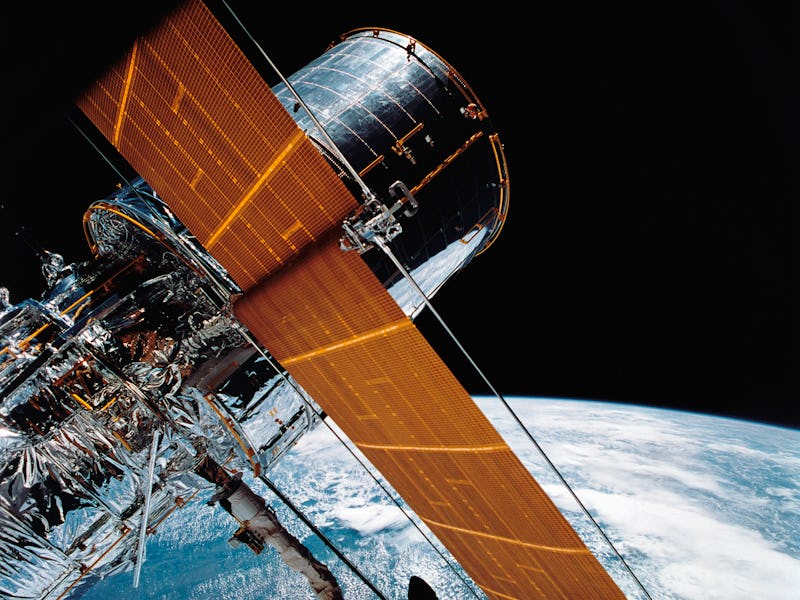NASA’s Hubble telescope fiasco gives China a huge opportunity
NASA is no closer to figuring out what went wrong earlier in June.

After more than two weeks of attempted fixes, NASA is still unable to revive its ailing Hubble Space Telescope.
The problem comes down to the computer that controls the Hubble telescope’s scientific equipment. The most recent Hubble team check-in looked at the computing module that actually formats the commands, aptly named the Command Unit/Science Data Formatter, or a power regulator, which ensures the right voltage is being sent to each piece of equipment.
But on Wednesday, June 30, NASA revealed that tests over the last week haven’t narrowed down potential issues. The team is now gearing up to switch the Hubble over to backup versions of both instruments.
Without Hubble, there’s no telescope at NASA able to capture images in certain spectrums — which could give the China National Space Administration a chance to fill that void instead.
The move to switching to backup equipment could be risky, NASA says. Since these specific components interact with so many other pieces on the spacecraft, other back-ups need to be switched on as well. The team will first review all the procedures and commands necessary to make the switch on the 40-year-old hardware, and then perform a test run in a “high-fidelity simulator.” If that’s successful, NASA will make the switch on the real Hubble.
NASA notes that a similar switch to the same component was successfully completed in 2008, right before a 2009 service mission swapped out the faulty hardware for a new set.
But if the backup components don’t work either, or the hardware switch fails, it’s unclear what NASA will do. There is still no mission to service the 30-year-old Hubble — the telescope was built with Space Shuttle servicing in mind, and that fleet has been entirely retired. Repair options are extremely limited when the satellite is in wide orbit 340 miles away from Earth’s surface.
Former NASA engineer and deputy associate administrator Wayne Hale chimed in on Twitter to add that even if NASA wanted to take a trip to the Hubble, neither the Boeing Starliner nor SpaceX Falcon series has repair capabilities.
The Hubble Space Telescope was designed to be serviced by the Space Shuttle, which was retired in 2011.
So what about the Luvoir telescope?
The Hubble telescope is a unique space telescope in NASA’s arsenal, as it’s able to capture visible light. Other telescopes currently in service or nearing launch don’t cover this spectrum, instead focusing on light in the ultraviolet, infrared, X-ray, or gamma-ray spectra.
(You can read more about other telescopes that complement Hubble’s range in this earlier post.)
Launching an enormous space telescope is a years-long undertaking, so understandably NASA is mostly focused on getting the James Webb Space Telescope (JWST) off the ground. But JWST won’t have visible light capabilities.
The next telescope that NASA launches after Webb might have some visible light capability. One contender is the Large UV/Optical/IR Surveyor, or LUVOIR telescope, which is pitched as a way to explore distant planets with higher-resolution imagery. The project, which is still in a concept phase, would use visible, infrared, and ultraviolet light like the Hubble.
“LUVOIR will search for habitable conditions and signs of life on dozens of potentially habitable worlds beyond our Solar System,” the telescope’s project website reads. “The results of this search will bring a wealth of data on the atmospheric composition and surface conditions of rocky planets in the habitable zones of a variety of stars.”
LUVOIR is one of four telescopes that astrophysicists are weighing for the next generation of Very Big Telescopes, and it’s the most versatile as well. The HabEx telescope seeks to cover similar optical, UV, and infrared wavelengths, but its resolution would be lower than LUVOIR.
The LUVOIR telescope, which is still on the drawing boards.
What about outside NASA?
While NASA has long been associated with space telescopes, other space agencies have launched some of their own. For instance, China will have access to a new space telescope that images visible light very soon.
The telescope is called Xuntian, or “survey of the heavens,” and is meant to complement China’s new space station. The telescope is planned to launch in 2024, and will image the big three spectra currently serviced by Hubble: infrared, UV, and visible light.
Servicing Xuntian will also be a bit easier than servicing the Hubble. Missions to repair, upgrade, and refuel the telescope could be carried out by astronauts on China’s space station, rather than needing a separate launch from Earth to intercept the equipment.
But since Hubble flies in such a large orbit around the Earth, NASA doesn’t have that luxury with the comparatively low-orbit ISS.
That means for now, the pressure is on NASA for a remote computer repair.